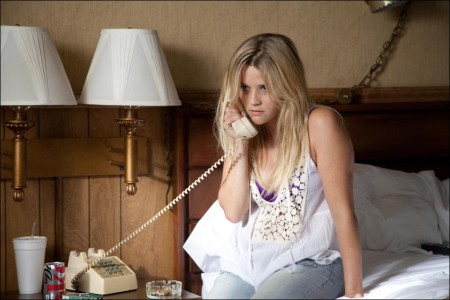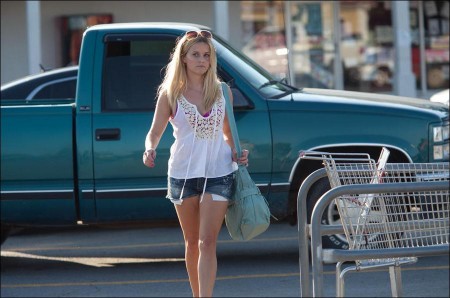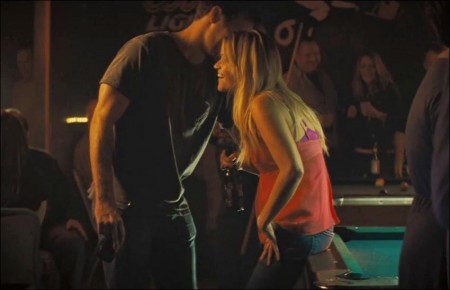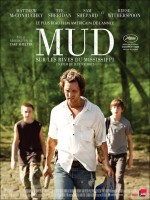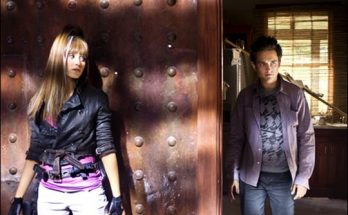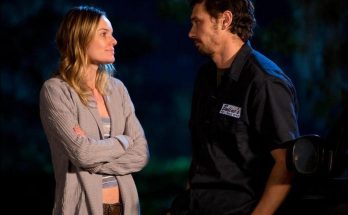Mud is an adventure about two boys, Ellis and his friend Neckbone, who find a man named Mud hiding out on an island in the Mississippi. Mud describes fantastic scenarios-he killed a man in Texas and vengeful bounty hunters are coming to get him.
He says he is planning to meet and escape with the love of his life, Juniper, who is waiting for him in town. Skeptical but intrigued, Ellis and Neckbone agree to help him. It isn’t long until Mud’s visions come true and their small town is besieged by a beautiful girl with a line of bounty hunters in tow.
About the Story (2013)
Jeff Nichols got the spark of an idea that later grew into Mud while doing research in the Arkansas Public Library. He had found a picture of a river diver with fantastical gear in a book. The image struck his imagination. “I began thinking of what kind of character this was, where he lived, and what his life was like.” Add Nichols’s love of Mark Twain, his penchant for sweeping action and big themes, and the story of Mud grew from there.
Nichols had wanted to tell the story of Mud for the last decade. With the critical success of Shotgun Stories (2007) and his Cannes Grand Prize award winning film, Take Shelter (2011), he was finally able to marshal the resources to see his vision come to the screen. In that regard, says Nichols, Mud is the culmination of everything he has been working toward as a writer and filmmaker. Mud, his third film, is also his most ambitious, with the biggest budget of any of his films, and it required more time for writing and producing, with a 39-day shoot spread over eight weeks on location in Southwest Arkansas.
The film’s river setting, its teenage protagonists, and its themes of sacrifice and forgiveness echo themes from the American classic The Adventures ofHuckleberry Finn, (which was required reading for 14 year-old actors Tye Sheridan and Jacob Lofland on the set). In an interview prior to filming, Nichols described Mud as “kind of like if Sam Peckinpah directed a short story by Mark Twain.”
In creating Mud, Nichols was influenced by writers who bring a strong sense of place to their work, including Raymond Carver, Cormac McCarthy, and Southern authors Larry Brown, Flannery O’Connor, and Harry Crews. “All of these writers made me want to learn how to become a good storyteller,” he says. He also takes inspiration from the films he most admires , a list that includes The Hustler, Badlands, Hud, Tender Mercies, Cool Hand Luke, A Perfect World, Fletch, and Lawrence ofArabia. “All of these films reached an honest place in regard to the human condition while telling really entertaining stories,” Nichols said in an interview with IndieWire.
Whereas Shotgun Stories was, in broad strokes, about revenge, and Take Shelter was about fear, Nichols says Mud is about love. Mud is about two 14-year-old boys who find this man hiding out on this island in the middle of the Mississippi River, and they decide to help him out,” Nichols says. “But what the film is really about is love. And it’s about this boy, Ellis, searching desperately for an example of love that works, whether that is looking to his parents, or looking to his best friend’s uncle, or in this case, looking to the character of Mud. Ellis wants to see love work. He desperately needs to find an example that isn’t broken.”
Sarah Green worked closely with Nichols to produce Mud, following their successful collaboration on Take Shelter. “Mud is a wild river adventure with an unreliable protagonist, a beautiful woman, bounty hunters and a classic quest. These young boys have to solve the obstacles that complicate their quest, and in the process they learn about life and ultimately love. It’s an enormously fun story, which will pull you in, and then leave you thinking about the people in your life that you love.”
Producer Aaron Ryder describes Mud as “not your traditional love story,” but about a young boy’s discovery of what love really is. “He’s searching for love because his parents are splitting up. He’s searching for guidance and he’s searching for identity. I see it as just a beautiful love story,” he says.
About the main character of Ellis, the 14-year-old protagonist, Nichols says, “It’s a little cheesy to say, but Ellis came from a series of high school heartbreaks. I am a big believer that love, when you’re a teenager, is probably more fierce than it ever will be for the rest of your life. That doesn’t mean it’s deeper or more sincere, it just means it’s more intense. When you’re in love, it’s this feverish thing, and when your heart is broken, it’s just as painful. And that really, for me, is what I wanted Ellis to be like. If I could express in a film that polarization and that intensity in love out of a young kid, I feel like it’s a story worth telling.”
Nichols won universal respect from the Mud cast and crew, as both a writer and a director. “As I read scripts I don’t like to know who’s involved at first, because I don’t like to be drawn to stories for any reason other than that the script is great,” explains producer Lisa Maria Falcone, head of Everest Entertainment. “ I saw the passion that [Jeff] had. He’s one of those directors that I see is really going to be explosive. He’s explosive today in such a short period of time. I can on ly imagine what he will become.”
“Jeff is one of the more extraordinary talents working today. He’s a very thoughtful writer, and structures his work thoroughly so it plays out in both a surprising and satisfying manner,” says Green. “As the writer he knows the story intimately, as the director he’s lived with the material long enough to have a very clear intention of how to tell that story. I hear from the actors over and over again about how clear and specific he is in his direction.”
To complete Mud in under 40 days, Nichols relied on a dedicated, experienced, tightly coordinated team on the set that included Adam Stone, who has lent his expertise, visual talent, and cool hand as director of photography on all three of Nichols’s films. Cas Donovan, assistant director, and Hope Garrison, assistant director, kept production moving forward through rough terrain, remote locations, shootouts, stunts, snakes and explosions, and the inevitable surprises and adjustments that occur during filmmaking.
Mud was filmed in 35mm using an anamorphic lens in a 2.40 (widescreen) aspect ratio. Nichols wanted to give the film a timeless look so the story of Ellis and Mud would be the focus. Ellis’s perspective is represented in the production of the film through long lenses: “This is the world seen from Ellis’ eyes. So, Ellis is me. Ellis is whoever is sitting in the seat, really,” says Nichols.
Nichols had a vision for how small visual cues would add dimension to his characters. In a script where spoken words are few, he knew these details would provide a path for the audience to connect with the story. Nichols had a clear sense about how things should look and feel, from the fishing gear on Senior’s houseboat to the books on the bookshelves in Tom Blankenship’s house (Sam Shepard had suggested to Nichols that his character was the kind of man who would read Don Quixote. Nichols rushed an original edition to the set in time for filming). He even carried out his long-held image of the oyster diver in Galen’s extraordinary welded underwater gear, inspired by his initial public library research a decade earlier. Working closely with art director Richard Wright and costume designer Kari Perkins, Nichols was able to achieve a small-town, timeless look and feel and enhance the wild river setting for Mud.
Simplicity and authenticity in the set decoration, along with the natural settings on the river and in the towns in Arkansas, were the foundation upon which movement, drama and very intense scenes unfolded. “I knew it was going to be a tricky film to make because all of the stunts and effects are practical,” says Nichols. “Shotgun shootouts, dirt bike scenes, snakes and water and all this craziness.”
Mud (2013)
Directed by: Jeff Nichols
Starring: Matthew McConaughey, Reese Witherspoon, Sarah Paulson, Michael Shannon, Sam Shepard
Screenplay by: Jeff Nichols
Production Design by: Richard A. Wright
Cinematography by: Adam Stone
Film Editing by: Julie Monroe
Costume Design by: Kari Perkins
Set Decoration by: Fontaine Beauchamp Hebb
Music by: David Wingo
MPAA Rating: PG-13 for violence, sexual references, language, thematic elements and smoking.
Studio: Lionsgate Films, Roadside Attractions
Release Date: April 26, 2013
Visits: 84
